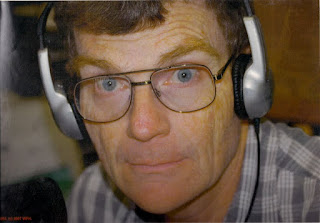Simple antennas for the Hawaii Island Amateur Radio Operator--a continuing series
This has been a busy teaching week at Laupahoehoe High and Elementary School. Eversince I landed a long-term substitute teaching position at the school, there hasn't been too much time to chase radio signals. My position involves working with several special education students--a real challenge. My heart goes out to parents who are trying to bring their special needs children into the main stream of education. The job is frustrating at times, but I get a lot of personal satisfaction helping these students get an education. So much for an easy retirement. As for amateur radio, I manage to get on late in the evening after lesson plans are done and student progress reports are compiled. The time before my venerable Swan 100-MX and Kenwood TS-520 provides a way of escaping the pressures of the day. I find cw relaxing. I never thought I would look at cw that way, but, after all these years, the old J-38 key has become a real tension reliever....
